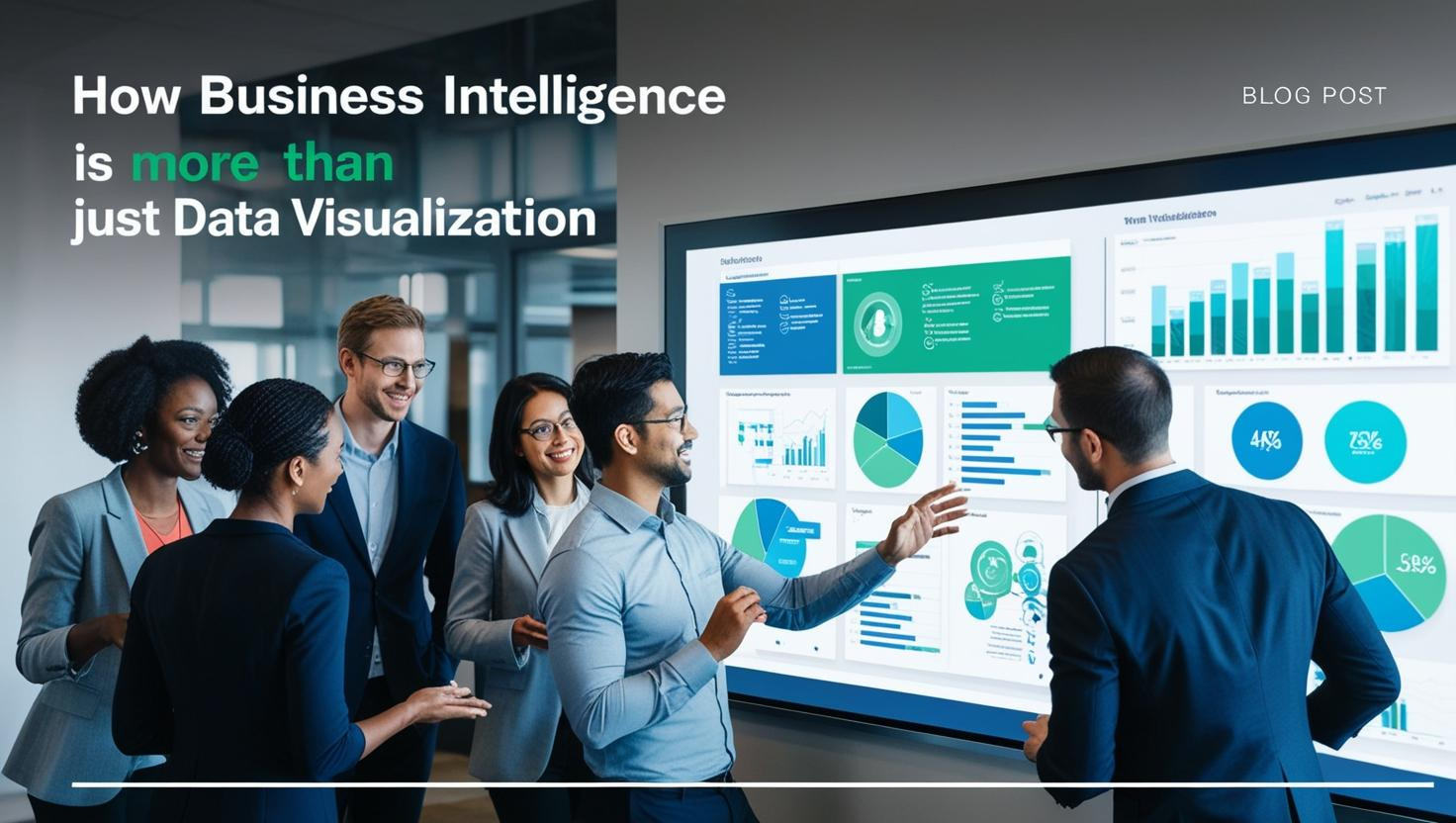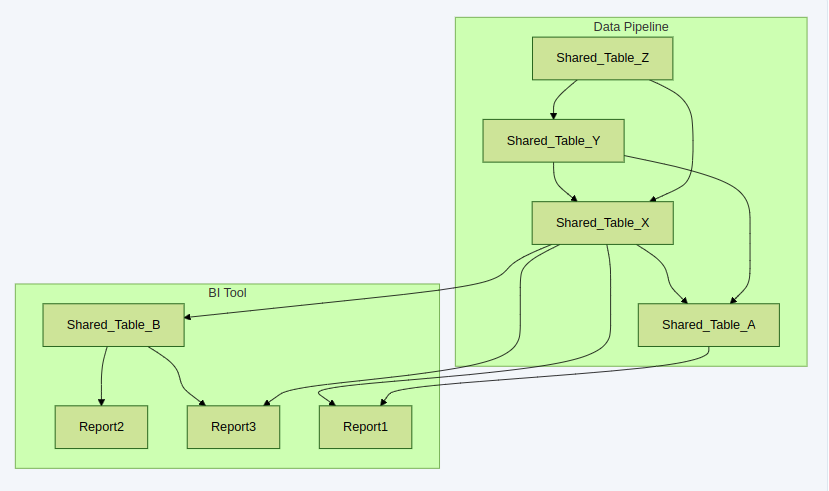Isn’t Data Visualization Enough?
I remember when I first encountered BI tools, I was kind of perplexed as to what they did that I couldn’t already do with a data visualization tool. If you already have python and matplotlib, then you can make all the charts you need, no? Same goes for Google Sheets / Excel. So what’s the point in paying for a tool to make some bar/line charts that you already make using tools you already have?
At the same time, every company I’ve worked for has relied heavily on a BI tool. I hear about nearly every tech startup eventually shopping around for its BI tool. I also see reports estimating the total size of the market for BI tools in the billions or tens of billions of dollars (depending on how you count). Presumably, there must be some reason people spend all this time and money on BI software?
Where Data Visualization Falls Short
To put it as concisely as possible, ordinary data visualization tools don’t attend to the social and collaborative needs an organization has around visualizing its data.
To give an illustrative example, let’s say I’m working on software for a laboratory and I want to understand how much time is spent on each stage of the lab’s experiments. I could put together an excel sheet with some charts or a python program to visualize the data for me, and then I’ll personally understand the answer to my question. Now suppose I want to get other people involved. Maybe there’s another coworker that’s looking to find ways to cut back on how much time we spend doing each experiment, and so they want to see the same results I put together. Do I send them a handful of PDFs? Maybe I can send them the python script I used, or the spreadsheet, but then what if they’re not technical enough to know how to make simple changes? I’ll probably get peppered with requests to make super simple changes to the charts e.g. “can you redo charts, but just for experiments run by so-and-so’s team?” or “these charts are three weeks old now, could you please update them with the most recent data?” or “you’re only displaying a month of data here, could you make it cover the past two months?” If you’ve ever released some kind of data report to business users in PDF form, you’ve probably encountered a ton of these kinds of requests. They’re all kind of small, but collectively, they can start to take up all your time, to the point where you’re too distracted to make progress on any of your other projects.
Features of The Business Intelligence Tool’s Approach
BI Tools are designed to visualize data in ways that are most valuable to the organization as a whole. This means they have to get a number of things right:
BI tools produce reports that are easy to digest. Even without any technical expertise.
A BI tool should be able to produce a dashboard so straightforward that you can forward it to anyone in your organization and they’ll be able to get a rough sense of what the data is showing immediately and without any coding or technical know-how. Maybe you might need to talk them through what some of the charts mean, but if your BI tool has a good enough AI assistant, the assistant should be able to answer those questions for you.
Nontechnical users can tweak simple parameters to modify reports in predictable ways.
The reports in a BI tool are easily configurable. Typically, the end consumers of the data can set some kind of start_at and end_at parameters to indicate the time period they’re interested in, and all the reports will automatically restrict themselves to just that time period. A good BI tool will let you include pretty much any other parameter you can dream up e.g. you release an “Experiment Detail” dashboard for people in your laboratory that gives a complete overview of any one experiment, and it comes with an experiment_id parameter that they can change to select the particular experiment they’re interested in.
BI tools keep their reports up to date
You don’t need to take the time to re-run reports in your BI tool. The reports should simply always be using the most recent data. This feature is a tricky thing to implement, and it means the BI tool should have some kind of pipeline management features built in.
The List Goes On
The features above are some of the most important, but depending on the particular BI tool, there are a whole host of other things they might offer. We’re not going to get into all of them here, but for the most part, they tend to be features that somehow support or enhance one of the above three.
Use Cases Enabled by a BI Tool
The above list of features is enough to support using a BI tool within an organization for things you couldn’t otherwise do with simple data visualization tools. Here are couple common ways I’ve seen an organization make use of their BI tool:
Creating Alignment
By far the most impactful use I’ve seen for BI tools is when they help create alignment between different parts of an organization. It’s very easy for different teams to use different sources of data and wind up with different and incompatible views of what’s happening.
To give one example I know quite well, in a logistics organization, you can have several teams that all care deeply about the time it takes between when goods first arrive in the country until they’re first available to sell to consumers. That delay is one of the most important metrics to the organization and everyone uses it in a different way: The operations teams set targets on how much delay they’re allowed to introduce and regularly compare their performance to the target. Process engineering teams have to understand where to find the major opportunities for improving that metric by modifying company processes. Marketing and sales teams need to communicate about that delay to customers and set proper expectations on how long they’ll have to wait for goods to move from place to place.
Generally, almost any organization benefits from keeping different teams and stakeholders aligned on key pieces of quantitative information, and a BI tool can easily be instrumental in creating that alignment. In the example above, the company should release a BI dashboard that displays the “official” record of how much delay there is in moving goods from start to finish, and every team works off that same dashboard (or at least off the same underlying data). If someone wants to exclude outliers, or process/interpret the data differently, they propose and release a change to that one dashboard, and all the different stakeholders stay in sync about the changes to their data.
Structuring the Weekly Metrics Review Meeting
Some organizations are extremely metrics driven; each team lead is made responsible for certain key business metrics and needs to report regularly to peers and to upper management about a) how are those metrics looking, b) are there any notable changes or causes for alarm and c) what’s the team doing to improve those metrics.
Organizations like this are quite fond of the weekly (or monthly / quarterly) metrics review meeting. This is usually the meeting at which teams present on their metrics. To prepare for such a meeting, the manager will need to put together a quick presentation, complete with tables, graphs, bar/line charts…. basically everything a good BI tool should be able to maintain for you.
An organization that’s making the best use of their BI tool will integrate it thoroughly into the metrics review meeting. Maybe each team gets their own BI dashboard for reporting on metrics. The BI tool can reduce the amount of time the team leads have to spend preparing for the review meeting. I’ve seen teams spend a day or more before each weekly review meeting just rebuilding the same charts they use every week. The BI tool can save them all that time, and help them devote more time into understanding the root causes of new trends and anomalies in their data.
Connecting Individual Contributors to Company Goals
Individual contributors within an organization function much better when it’s clear how the work they do contributes to important company goals. When a manager assigns a project to one of his reports, he should make it super clear exactly how that project is supposed to be good for the organization. In particular, it’s best if the assignee knows exactly which important company metric is supposed to improve as a result of the project.
Especially for more senior contributors, assigning them a project explicitly devoted to improving a particular business metric is one of the best ways to unlock their creativity. Rather than spelling out exactly how to proceed with the project the manager gives autonomy to the contributor on what to do, but still holds them accountable to the goal the company is ultimately looking to achieve.
One common pattern is for the contributor to start off with the metric in the BI tool, and make for themselves a project-specific dashboard to show everything relevant to how they want the metric to improve. Maybe they put the metric everyone else cares about on the top of the dashboard, and beneath it they put all the other reports that are specific to the particular approach their project will take to improve it.
Want One?
The above discussion covers what I think are the most compelling reasons a company should want to start using a BI tool for visualizing their internal company information. I went through the major features they have that simple data visualization tools lack, and the kind of use cases those features unlock for you.
If you’re considering shopping for your first/next BI tool, please don’t hesitate to get in touch!



